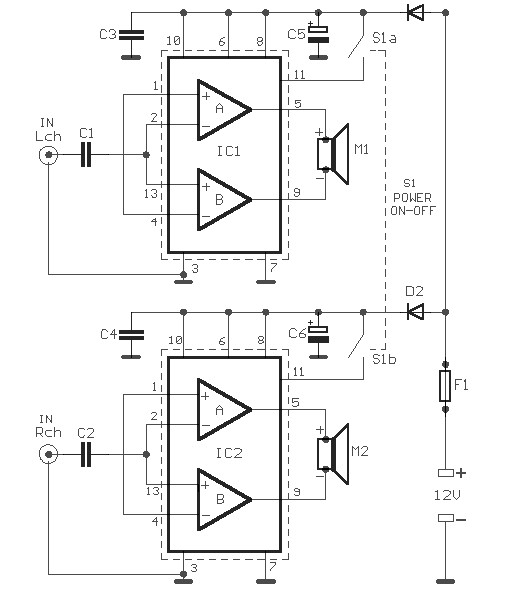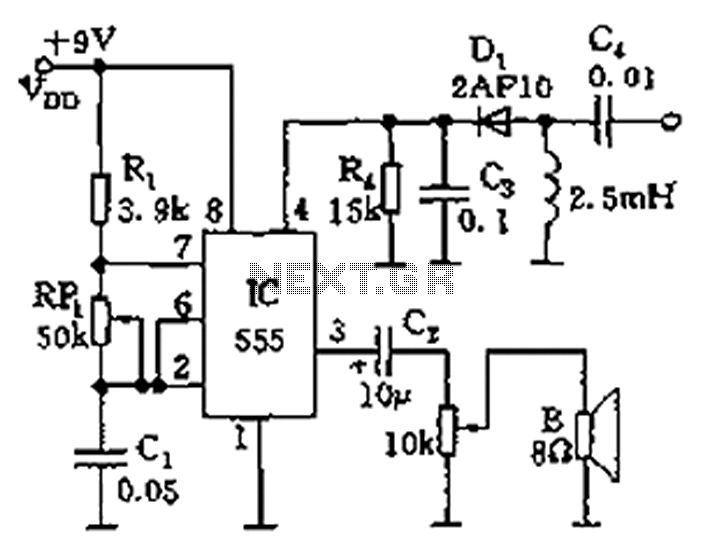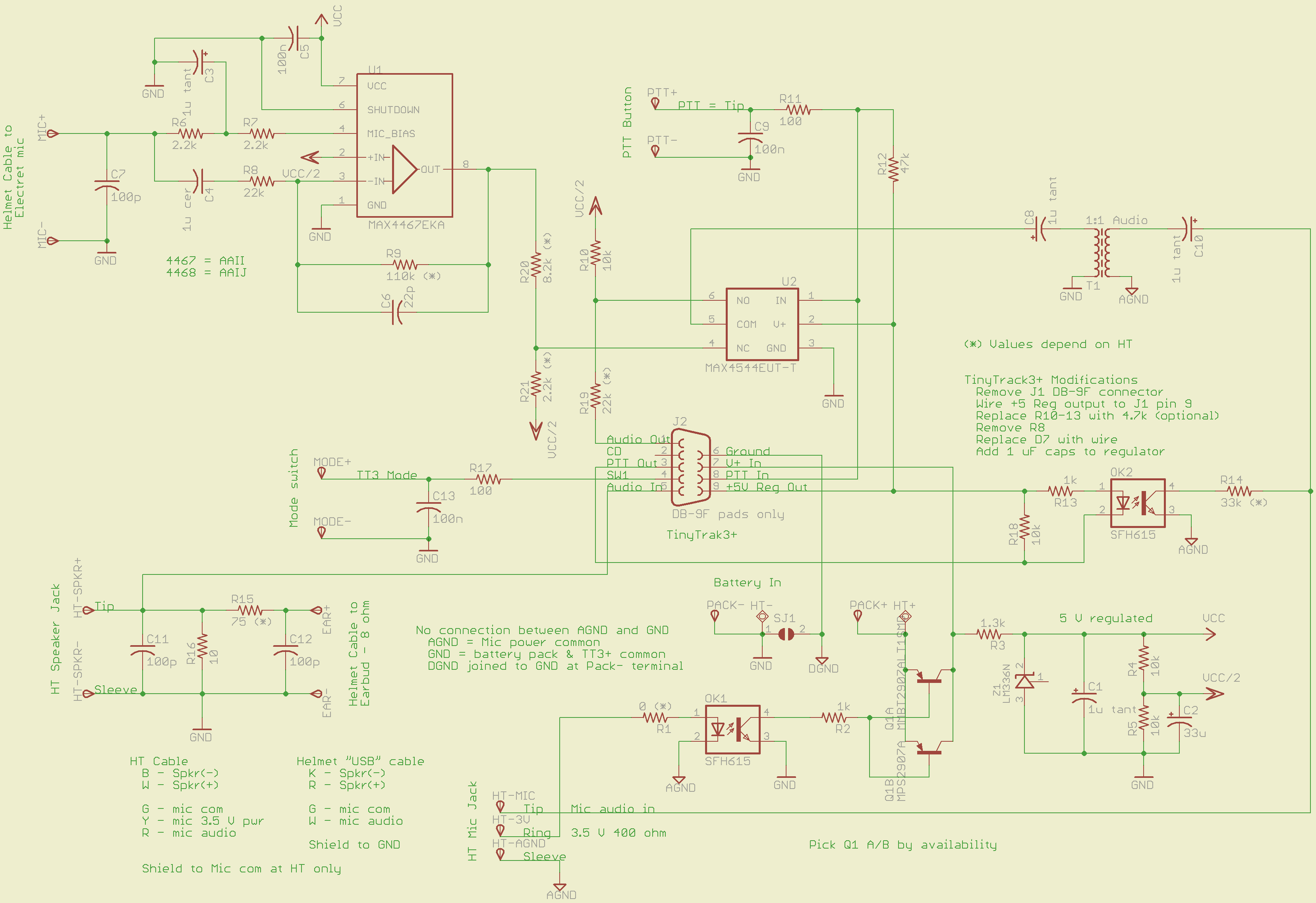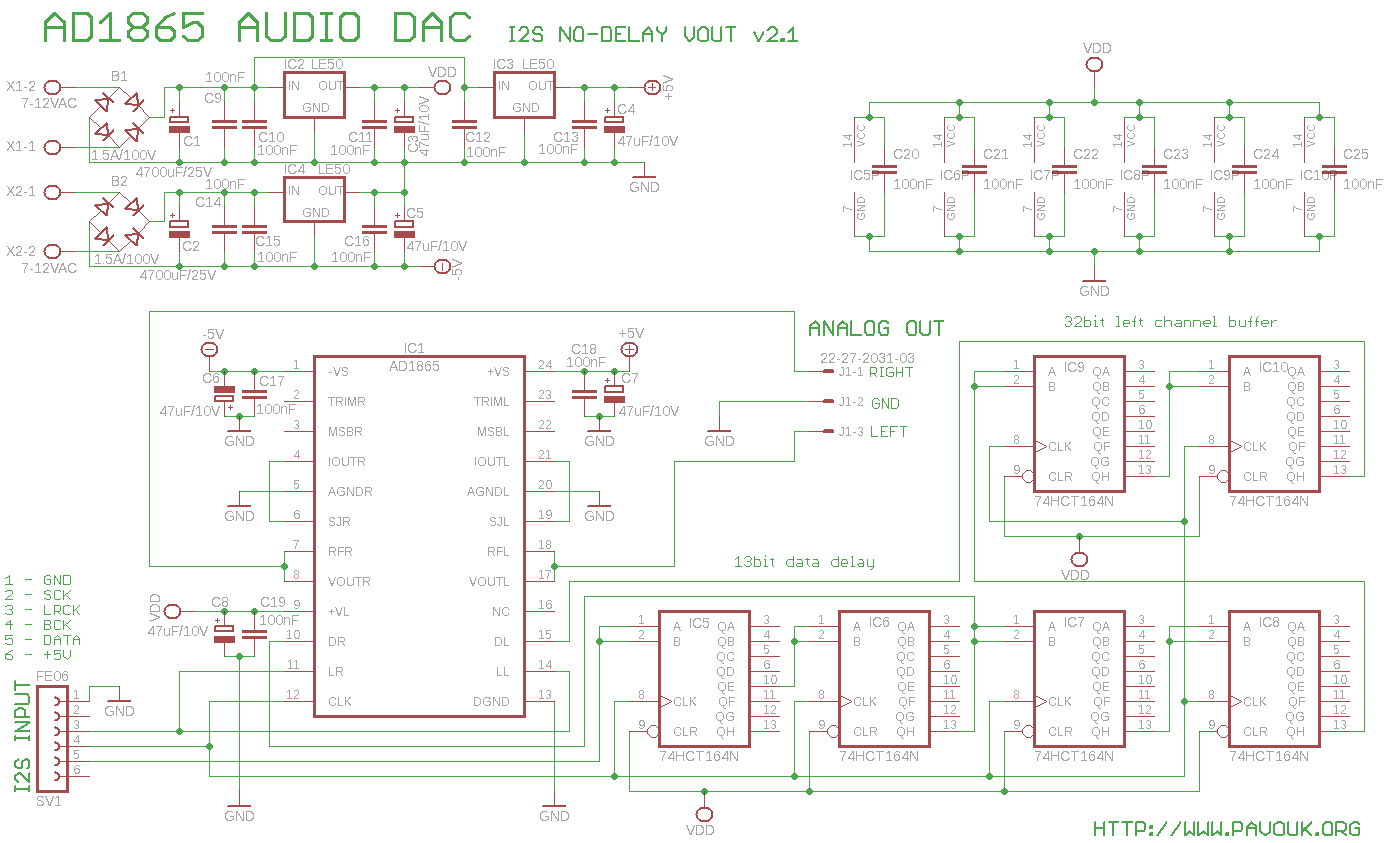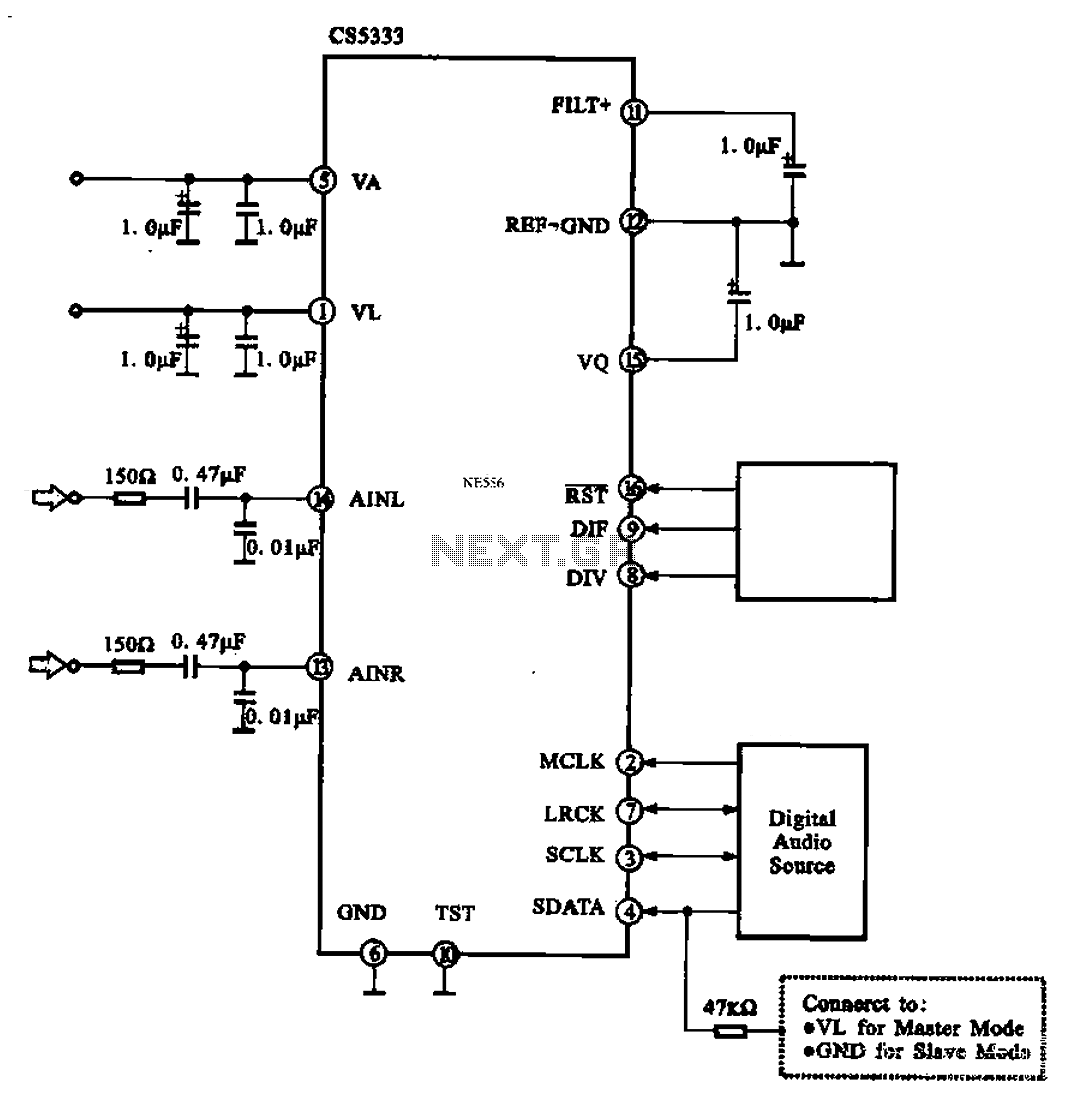
Low Noise Moving Coil Audio Preamplifier
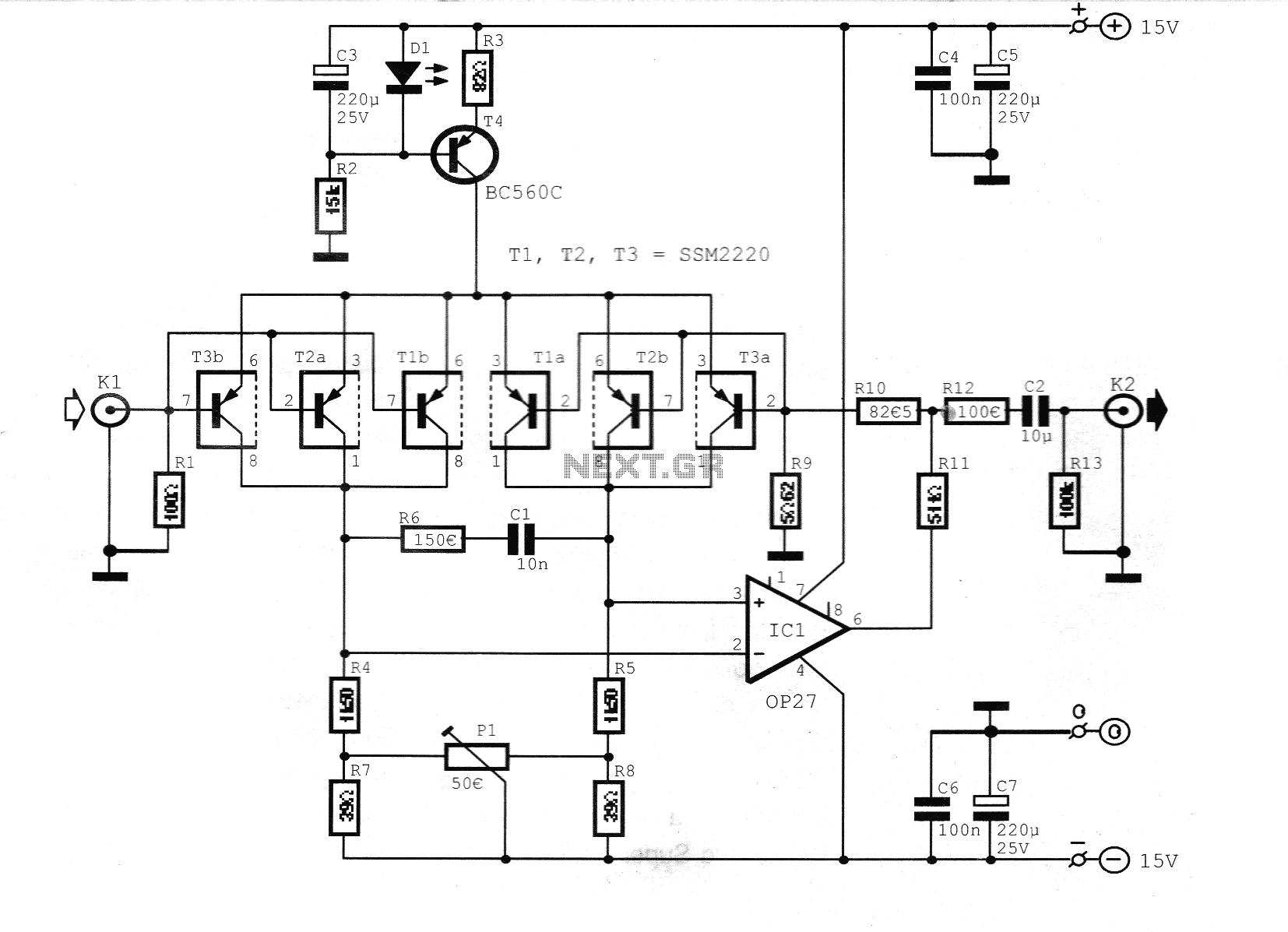
This preamplifier is designed for low-resistance sources such as moving coil heads (MC). The circuit employs three parallel double transistors, SSM2220 or MAT03, which form a differential amplifier that minimizes noise. When connected to an OP27 amplifier, it further reduces noise levels. The choice of PNP transistors over NPN transistors is due to their lower low-frequency noise characteristics. Additionally, trimmer P1 and resistors R7 and R8 are used to equalize the rates of resistors R4 and R5 at the output of the differential amplifier. The transistor T4 and LED D1 serve as the power supply for the amplifier, with the LED providing improved thermal dissipation.
This preamplifier circuit is particularly suitable for applications requiring high sensitivity and low noise, such as in audio and instrumentation systems. The use of SSM2220 or MAT03 transistors in parallel enhances the circuit's performance by increasing the input impedance and reducing the overall noise figure. The differential amplifier configuration effectively cancels out common-mode noise, resulting in a cleaner output signal.
The integration of the OP27 operational amplifier further enhances the circuit's performance by providing high precision and low offset voltage, making it ideal for low-level signal amplification. The PNP transistor selection is crucial, as it contributes to lower noise at low frequencies, which is essential for maintaining signal integrity in sensitive applications.
The trimmer P1 allows for fine-tuning of the gain and ensures that the output from the differential amplifier is balanced. Resistors R7 and R8 serve to set the feedback path, stabilizing the circuit and ensuring consistent performance across varying conditions. The careful selection of these components plays a vital role in achieving the desired performance characteristics.
The power supply section, comprising transistor T4 and LED D1, not only provides the necessary voltage and current to the circuit but also leverages the LED's thermal properties to dissipate heat efficiently. This design consideration is critical in maintaining the reliability and longevity of the amplifier, especially in high-demand scenarios.
Overall, this preamplifier circuit is an excellent choice for low-resistance signal sources, combining advanced components and thoughtful design to achieve superior performance in noise-sensitive applications.This preamplifier was designed for low resistance sources like moving coil heads (MC). The circuit uses in parallel three duble transistors SSM2220 or MAT03 and by forming a diferential amplifier keeps noice low. Connecting this amplifier in front of a OP27 amp we gain even lower noise. Also the reason we use PNP rather NPN transistors is because they have les low frequency noice. Trimmer P1 and resistors R7/R8 equalize the rates or R4 and R5 of differential amplifier's output. The transistor T4 and LED D1 are the power feed of amplifier. But the use of a LED in this position is better thermal spreading.
This preamplifier circuit is particularly suitable for applications requiring high sensitivity and low noise, such as in audio and instrumentation systems. The use of SSM2220 or MAT03 transistors in parallel enhances the circuit's performance by increasing the input impedance and reducing the overall noise figure. The differential amplifier configuration effectively cancels out common-mode noise, resulting in a cleaner output signal.
The integration of the OP27 operational amplifier further enhances the circuit's performance by providing high precision and low offset voltage, making it ideal for low-level signal amplification. The PNP transistor selection is crucial, as it contributes to lower noise at low frequencies, which is essential for maintaining signal integrity in sensitive applications.
The trimmer P1 allows for fine-tuning of the gain and ensures that the output from the differential amplifier is balanced. Resistors R7 and R8 serve to set the feedback path, stabilizing the circuit and ensuring consistent performance across varying conditions. The careful selection of these components plays a vital role in achieving the desired performance characteristics.
The power supply section, comprising transistor T4 and LED D1, not only provides the necessary voltage and current to the circuit but also leverages the LED's thermal properties to dissipate heat efficiently. This design consideration is critical in maintaining the reliability and longevity of the amplifier, especially in high-demand scenarios.
Overall, this preamplifier circuit is an excellent choice for low-resistance signal sources, combining advanced components and thoughtful design to achieve superior performance in noise-sensitive applications.This preamplifier was designed for low resistance sources like moving coil heads (MC). The circuit uses in parallel three duble transistors SSM2220 or MAT03 and by forming a diferential amplifier keeps noice low. Connecting this amplifier in front of a OP27 amp we gain even lower noise. Also the reason we use PNP rather NPN transistors is because they have les low frequency noice. Trimmer P1 and resistors R7/R8 equalize the rates or R4 and R5 of differential amplifier's output. The transistor T4 and LED D1 are the power feed of amplifier. But the use of a LED in this position is better thermal spreading.
